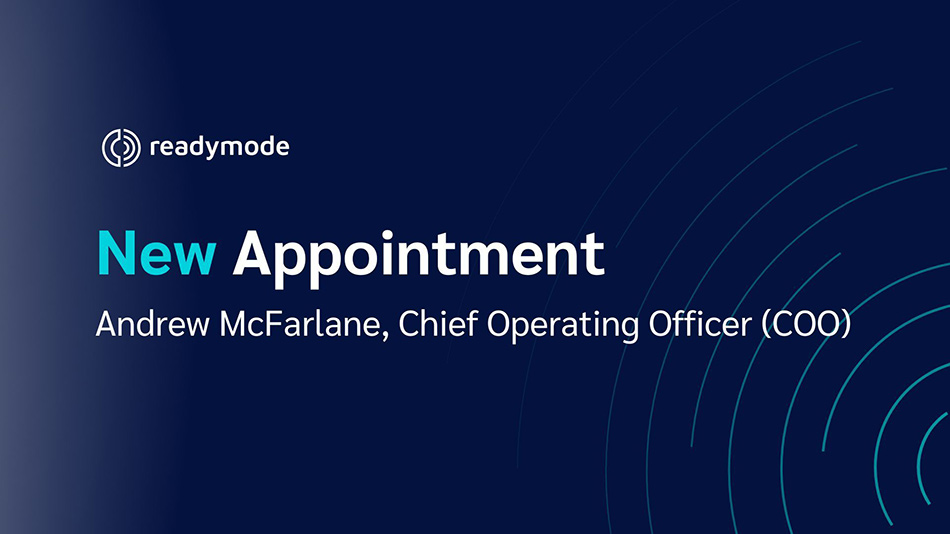With the spring and summer sales season heating up, is your team ready to start generating solar leads?
Electricity demand in the U.S. typically peaks in July and August, making the summer months prime time for solar sales. Now is the time to prepare and take full advantage of spring and summer sales opportunities.
In this blog, we’ll cover how to generate and follow up on solar sales leads. We’ll review key industry trends, offer tips for qualifying leads, and share nine lead generation tactics—plus three effective follow-up strategies to help turn interest into sales.
Solar Sales Trends
Industry data shows there’s never been a better time to sell solar panels. US solar panel dealers installed nearly 50 gigawatts direct current (GWdc) of capacity in 2024, according to the Solar Energy Industries Association—a 21% increase from 2023, marking two record-breaking years in a row. Grand View Research projects that the global solar panel market will continue to expand at a compound annual growth rate of 7.7% through 2030.
Sales opportunities peak in the summer, but you can generate business all year by diversifying your strategy. Solar panel purchases begin to rise in March, increase in April and May, then jump in June and peak in July and August—before returning to March levels in September. This trend reflects the reality that most consumers don’t start thinking seriously about solar panels until they’re hit with summer energy bills.
While summer offers the biggest opportunity, you can extend your sales season by shifting the conversation. For instance, purchasing solar panels in late winter or early spring allows homeowners to start overproducing energy and earning credits before summer bills arrive, helping them avoid double payments for both grid power and solar panels.
What to Look for in Solar Leads
To make the most of solar sales opportunities, it’s important to focus on lead quality, not just quantity. While generating enough leads is essential, what matters most is generating qualified leads.
Qualified solar leads typically meet several of the following criteria:
- Live in areas with sufficient sunlight and strong energy incentives
- Use high amounts of energy
- Own property with a roof that’s the right size, properly positioned, and in good condition
- Plan to stay in their current home or location for at least two more years
- Care about environmental sustainability
- Meet the financial qualifications needed to purchase solar panels
- Have household or business purchasing authority
- Show interest in learning about or purchasing panels
You can also develop your own lead qualification checklist and apply a scoring system to prioritize your strongest prospects. This approach helps align lead qualifying and scoring with the prospecting tactics outlined below.
How to Generate Solar Leads
Solar sales teams can use a wide range of tools to generate leads, from tech-driven strategies using smartphones and computers to traditional approaches focused on networking and direct outreach.
1. Outbound Calling (Cold Calling)
Outbound calling remains one of the most efficient ways to generate a high volume of qualified leads in a short period. In fact, companies that use cold calling see 42% more growth than those that don’t. This highlights how live, personalized conversations allow agents to engage leads, ask discovery questions, and quickly qualify or disqualify prospects.
To get the most out of outbound lead generation, follow these best practices:
- Use a predictive dialer like Readymode to maximize agent productivity. It dials multiple numbers at once and connects agents only when a live person answers. One solar sales customer using Readymode iQ saw a 4x increase in productivity.
- Stay compliant with cold calling laws like the Telephone Consumer Protection Act (TCPA) to avoid penalties and keep your numbers from being blocked.
- Equip agents with a solar sales script to help guide conversations, address common objections, and build interest quickly.
2. Content Marketing
Content marketing leverages blogs, visuals, and videos to educate your target audience and position your brand as a trusted solar provider. Nearly one-third of companies invest 10-24% of their total marketing budget in content, reinforcing its growing importance.
To make your content marketing efforts count:
- Align your content with the customer journey to ensure it speaks to specific needs and questions at each stage.
- Use compelling headlines and eye-catching visuals to draw readers in.
- End with a strong call to action (CTA) that encourages readers to take the next step—whether it’s requesting a quote or booking a consultation.
3. Search Engine Optimization (SEO)
Search engine optimization strengthens your content marketing efforts by helping your articles and videos appear at the top of customer keyword searches. SEO drives organic traffic to your site and expands your reach.
To use SEO effectively:
- Incorporate high-volume keywords into titles, headings, meta descriptions, and file names.
- Build backlinks from reputable sites to increase your content’s authority and visibility.
- Track performance and build on high-performing content to keep campaigns on budget.
4. Social Media Marketing (Organic and Paid)
Social media platforms and their analytics tools make it easier to reach niche audiences with tailored content and targeted ads. You can use social media to amplify your broader content strategy or run platform-specific promotions.
To leverage social media marketing:
- Focus on platforms your audience actively uses, and post content that educates, engages, or entertains.
- Match content formats to platform norms—for example, short-form videos for TikTok or Reels for Instagram.
- Track performance and ad spend to stay within budget and optimize ROI.
5. Pay-Per-Click (PPC) Advertising
PPC advertising places your ads at the top of search engine results for selected keywords and topics. This allows you to reach large numbers of potential customers quickly. But for this tactic to be cost-effective, be sure to monitor your spending.
To run a successful PPC campaign:
- Target keywords and topics aligned with your ideal customers’ interests and intent.
- Use compelling headlines, relevant imagery, and messaging that speaks directly to audience needs.
- Run A/B testing (split testing) on a small scale to identify high-performing ads before committing more budget.
6. Referral Programs
Referral programs expand your reach by turning satisfied customers and prospects into advocates—often at little to no extra cost. They’re one of the simplest and most cost-effective marketing strategies to implement.
To get the most from your referral program:
- Create a clear profile of your ideal referral, and include it when communicating with sales reps and customers.
- Provide sales teams and customers with easy-to-share referral resources, such as affiliate links, email templates, and printable brochures.
- Offer referral incentives—such as discounts, gift cards, or perks from promotional partners—to encourage participation and reward successful referrals.
7. Community Events and Tradeshows
Participating in community events and tradeshows helps you connect face-to-face with potential customers, generate leads, and initiate meaningful conversations. This strategy doesn’t require a large investment, but thoughtful planning is key.
To use community events and tradeshows effectively:
- Choose events that attract your target audience, such as homeowners, residents of sun-rich states, or eco-conscious consumers.
- Use live demos, product displays, or eye-catching visuals to draw in attendees.
- Arm your team with short lead gen scripts (elevator pitches) and tools like QR codes or tablets to capture lead information efficiently.
8. Canvassing
Door-to-door canvassing puts you directly in front of potential customers, allowing personal interaction and real-time qualification. Although it’s more time-intensive than digital tactics, a single sale can make the effort worthwhile.
To canvas effectively:
- Identify neighborhoods and properties that match your ideal customer profile.
- Train canvassers to use concise sales scripts and provide them with leave-behind materials like brochures or flyers.
- Focus on building rapport and setting follow-up appointments rather than delivering a full sales pitch at the door.
9. Direct Mail
Like canvassing, direct mail brings your message straight to prospects’ homes. It’s a cost-effective way to blanket qualified areas, especially when combined with strong targeting.
For best results:
- Use your in-house mailing list or rent response lists (people who’ve shown interest) to reach highly qualified leads. Use compiled lists (based on public data) to target broader audiences.
- Invest in compelling design and persuasive copy that grabs attention and drives response.
- Run small-scale A/B split tests to measure results and identify top-performing mailers before launching a full campaign.
How to Follow Up with Solar Leads
Once you’ve generated leads, the next step is to follow up quickly to secure appointments and turn interest into sales. Here are three effective ways to follow up:
1. Calling Campaigns
Phone calls allow you to speak directly with leads, build rapport, ask discovery questions, and schedule appointments. They also add a personalized human touch to your omnichannel campaigns. Because each call is live and one-on-one, it gives reps a chance to reference previous interactions—whether from a tradeshow, a canvassing visit, a referral, or a content download—and continue building trust.
For example, if you meet someone at a local event or during door-to-door outreach, a follow-up call gives you a chance to reconnect, mention that earlier conversation, and move the lead closer to booking a solar consultation. If a lead fills out a form online or downloads a resource, calling adds a human touch that digital channels alone can’t provide.
To run an effective solar sales calling campaign:
- Use an outbound calling platform like Readymode, which includes built-in CRM and lead management tools. This allows you to automate follow-ups, centralize contact data, and integrate calls with email and SMS. Readymode integrates with popular solutions like Salesforce, MailChimp, Zoho, and ClickSend.
- Train sales reps to use call scripts designed to book face-to-face appointments.
- Continue calling at set intervals until you either schedule an appointment or receive a definitive “no.”
2. Email Campaigns
Email can complement your calling efforts or serve as a standalone follow-up method for leads who don’t answer calls. To follow up effectively via email:
- Personalize your emails by using the recipient’s name and referencing any prior contact. Always include a clear opt-out option to remain compliant.
- Create different email templates based on lead behavior. For example, separate messaging for those who requested more info versus those who asked for pricing.
- End each email with a clear call to action, contact info, and links to helpful resources or scheduling tools.
3. Text Messaging/SMS Campaigns
If leads aren’t picking up calls, SMS follow-ups can be a fast, effective alternative. To make your text campaigns work:
- Keep messages short, direct, and focused on a single call to action.
- Use texts to prompt the next step—such as clicking a link, responding to schedule a call, or confirming interest.
- Stay compliant with anti-spam laws by offering an opt-out option in each message.
Key Takeaways
Solar sales may peak in the summer, but you can use the strategies in this blog to drive results year-round. Apply lead qualification and scoring to prioritize prospects based on factors like location, energy usage, property type, and other key indicators. Use a mix of tech-driven methods—such as outbound calling, content marketing, and SEO—and traditional strategies like canvassing and direct mail to generate leads. Follow up with an omnichannel approach that combines calls, emails, and texts to increase your chances of converting leads into sales.
Outbound calling remains a key pillar of an effective solar sales strategy, supporting both lead generation and follow-ups. Readymode’s outbound calling solution boosts your sales team’s productivity with an all-in-one predictive dialer and CRM, helping your sales team streamline operations, connect with more qualified leads, and close more deals.
Book a demo to see how Readymode can power your solar lead generation, improve your outreach, and increase your sales.
Roy Rasmussen
Roy Rasmussen has three decades of experience as a freelance technology writer. He has written articles for clients in dozens of industries ranging from small businesses to Fortune 500 companies, including telecommunications, business communications, and call center technology industries. He is the coauthor of Publishing for Publicity and the ghostwriter of a best-selling series on sales.







